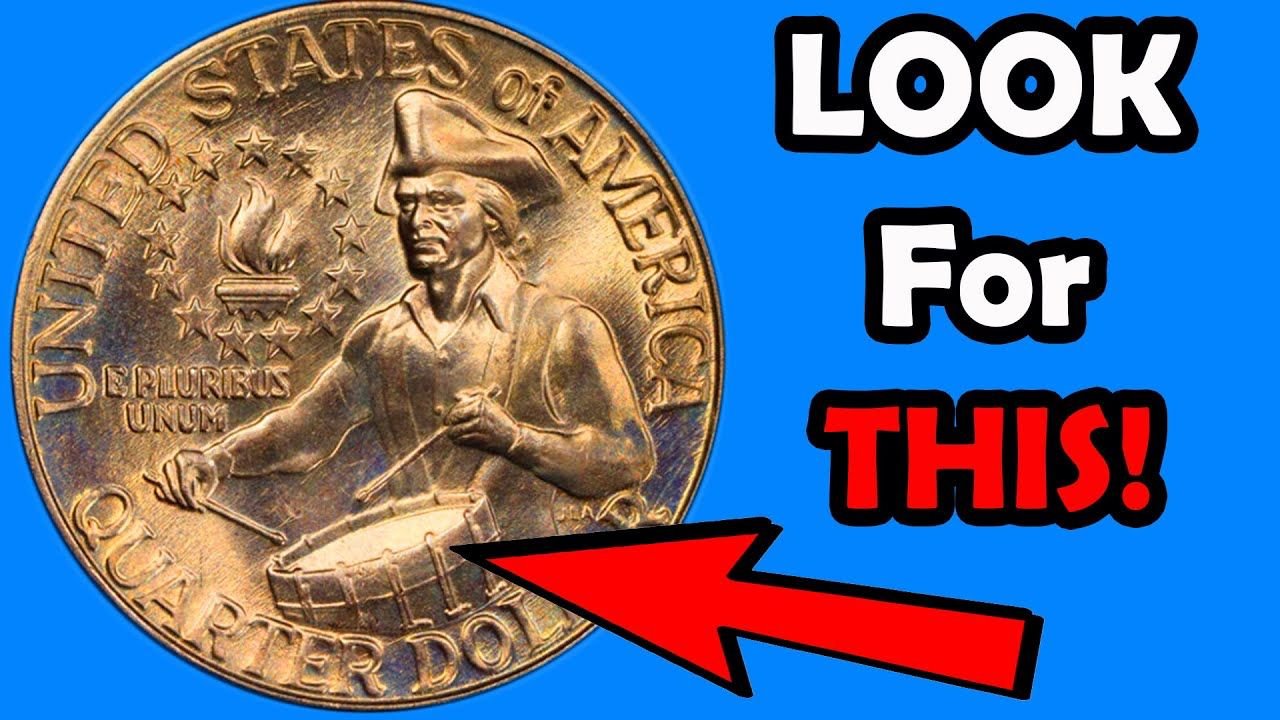The Rare Bicentennial Quarter Valued at $1 Million, Still in Circulation
Imagine holding a simple coin in your hand, something you might get back as change at the grocery store. Now imagine that coin being worth $1 million. Sounds too good to be true, right? But it’s not entirely impossible. A rare Bicentennial Quarter from 1976 has become the subject of fascination for collectors and everyday people alike. Some versions of this quarter are reportedly worth up to $1 million, and believe it or not, some of them might still be in circulation.
This article will guide you through the story of this fascinating coin — what makes it valuable, how to spot one, and why it’s so special. So, the next time you get change, you might want to take a closer look.
What Is the Bicentennial Quarter?
In 1976, the United States celebrated its 200th anniversary — the Bicentennial of the signing of the Declaration of Independence. To mark this occasion, the U.S. Mint released special versions of the quarter, half-dollar, and dollar coins. These were unique because they had special designs not seen before or since.
The Bicentennial Quarter features a colonial drummer on the back instead of the usual eagle. On the front, it still has George Washington’s portrait, but the date is shown as “1776-1976.” These coins were made in large numbers, so most are not rare or particularly valuable. However, a few unusual versions — because of minting errors, unique metal composition, or proof sets — are extremely rare and could be worth a small fortune.
What Makes One Worth $1 Million?
Most Bicentennial Quarters are only worth 25 cents. However, there are rare versions that collectors will pay big money for. Here are a few reasons why a Bicentennial Quarter might be worth up to $1 million:
-
Minting Errors: Some coins were accidentally struck with mistakes. These could include double stamps, misaligned images, or wrong metals.
-
Silver Content: While most quarters are made of copper and nickel, some special editions were made with 40% silver.
-
Proof Coins: These are specially made coins with extra detail and shine, often sold in sets. Some of these are now extremely valuable.
-
Condition: A coin in perfect or nearly perfect condition (graded as MS-67 or higher) can be very rare.
-
Limited Editions: Some coins were made in such small numbers that they’ve become highly collectible.
Better Letest Content – Overview Table
Here is a quick breakdown of different types of Bicentennial Quarters and what they might be worth:
| Type of Bicentennial Quarter | Estimated Value | Details |
|---|---|---|
| Regular Circulation Quarter | $0.25 | Common and widely available |
| Silver Bicentennial Quarter (40%) | $5 – $20 | Found in special collector sets |
| Proof Coin (Excellent Condition) | $50 – $1,000+ | Very shiny, high detail, sold to collectors |
| Error Coin (e.g., Double Die) | $1,000 – $50,000 | Rare mistakes during minting |
| Ultra-Rare Error/Special Condition | Up to $1,000,000 | Very few known, often held in private collections |
Still Circulating Today?
Yes, it’s possible. Though very rare, some of these valuable quarters may still be in circulation. Over the years, coins travel widely — passed from hand to hand, stored in jars, or forgotten in old drawers. That means your next quarter could be a jackpot in disguise.
People who find valuable coins often do so by accident. They notice something unusual about the coin — maybe it’s shinier, feels heavier, or looks a bit off. Upon closer inspection or after having it evaluated by a coin expert, they discover its real value.
How to Check Your Quarters
Here are some simple steps to help you spot a potentially valuable Bicentennial Quarter:
-
Check the Date: Look for “1776–1976” on the front of the coin.
-
Inspect the Edges: Silver quarters will have a smooth silver edge without copper streaks.
-
Examine Details: Coins with clear, sharp details are usually worth more.
-
Look for Errors: Any strange symbols, missing letters, or misaligned images could signal a minting mistake.
-
Consider Professional Grading: If you think your coin is rare, take it to a professional for grading and valuation.
Why Coin Collectors Care
Coin collecting, or numismatics, is a hobby filled with history, art, and a touch of treasure hunting. Rare coins like the million-dollar Bicentennial Quarter represent a dream for collectors. They combine historical importance, beauty, and rarity.
Some people collect for fun, while others treat it as a serious investment. Coins that are rare and in high demand can increase in value over time. The Bicentennial Quarter, especially the rare versions, sits at the crossroads of these interests.
FAQs About the Bicentennial Quarter
Q1: Is every Bicentennial Quarter valuable?
No. Most are only worth 25 cents. Only certain rare types with errors or silver content are valuable.
Q2: How do I know if my quarter is silver?
Check the coin’s edge. If it doesn’t show a copper stripe and looks completely silver, it might be made of 40% silver.
Q3: Where can I sell a rare quarter?
You can sell it to coin dealers, collectors, or through online auction sites. Always get it appraised first.
Q4: Can I find one of these rare quarters in my change?
Yes, it’s rare but possible. People sometimes spend valuable coins without knowing their worth.
Q5: Should I clean my coin before selling it?
No. Cleaning can reduce the value. Collectors prefer coins in their original condition.
Final Thoughts
The idea of a $1 million quarter might sound like a myth, but there are real examples of extremely valuable coins out there. The 1976 Bicentennial Quarter, with its special design and potential for rare versions, is a great reminder to pay attention to the small things in life — even your pocket change.
If you’re curious, take a few minutes to go through your coin jar or check your change. You never know — that ordinary-looking quarter might just be worth a fortune.



